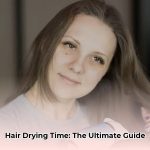Using leftover exterior paint indoors might seem like a cost-saving shortcut, but it’s a decision that could have unintended consequences for your health and your home. This article explores the potential risks of using exterior paint inside, explains why it’s not formulated for interior use, and offers safer alternatives.
Health Concerns with Exterior Paint Indoors
Exterior paints are designed to weather the elements. This durability comes from a higher concentration of volatile organic compounds (VOCs). VOCs are chemicals that evaporate into the air as the paint dries. Outdoors, these VOCs dissipate quickly. However, inside your home, where ventilation is often limited, VOCs can accumulate and linger, potentially leading to health issues.
Short-term exposure to high VOC levels can cause headaches, dizziness, nausea, and eye irritation. Individuals with asthma or allergies may experience breathing difficulties. While more research is needed, some studies suggest a possible link between long-term VOC exposure and more serious health problems.
Durability Issues: Why Exterior Paint Doesn’t Work Inside
Ironically, exterior paint, despite its robust outdoor performance, often doesn’t hold up well indoors. It’s not designed for the everyday wear and tear of interior life. Scuffs, spills, and even regular cleaning can damage exterior paint used inside. Common problems include uneven drying, a patchy finish, increased susceptibility to chipping and peeling, and difficulty in removal.
Safer Alternatives and Smart Exceptions
While using exterior paint indoors is generally discouraged, there are a few exceptions. In a well-ventilated, detached garage or workshop, the risks are minimized. However, even in these spaces, using a paint designed for both interior and exterior use, or a low-VOC interior paint, is a safer bet.
For living spaces, bedrooms, kitchens, and bathrooms, always opt for interior paint. It’s formulated for these environments and poses fewer health risks.
What about that leftover exterior paint? Dispose of it responsibly. Check with your local waste management center for guidelines. Some community organizations might accept leftover paint for their projects.
Using Interior Paint Outdoors: A Recipe for Failure
Just as exterior paint doesn’t belong inside, interior paint isn’t suitable for outdoor use. It lacks the protective properties needed to withstand the elements. Sun, rain, and temperature fluctuations can quickly cause interior paint to fade, peel, and become a breeding ground for mildew.
Never Mix Paints: A Chemical Clash
Mixing different types of paint, especially interior and exterior formulas, is not recommended. They have different chemical compositions, and combining them can result in a clumpy, unusable mess.
FAQ: Your Paint Questions Answered
Q: Is exterior paint cheaper than interior paint?
A: Sometimes, but any initial savings can be offset by potential health issues and a subpar finish. Investing in the right paint from the start is often more cost-effective in the long run.
Q: How long do VOCs off-gas?
A: This varies depending on the paint type and environmental factors. VOCs can off-gas for weeks, months, or even longer after the paint feels dry.
Q: What are safe alternatives to using leftover exterior paint indoors?
A: Low-VOC interior paints provide a wide array of finishes without the health risks. Interior/exterior hybrid paints offer a balance of durability and lower VOC content.
Q: What if I accidentally used exterior paint indoors?
A: Ventilate the area thoroughly. If you experience health problems, consult a healthcare professional. Depending on the severity, professional removal might be necessary.
Q: Can I use exterior paint on indoor trim?
A: It’s not recommended. High-quality interior trim paint offers better adhesion and lower VOCs.
Comparing Interior and Exterior Paints
| Feature | Interior Paint | Exterior Paint |
|---|---|---|
| VOC Levels | Typically Low | Typically High |
| Durability | Designed for indoor wear and tear | Designed for outdoor weather |
| Finish Options | Wide variety | More limited |
| Mildewcide | Often included in bathroom/kitchen formulas | Typically included |
| UV Resistance | Not required | Essential |
Conclusion: Prioritize Health and Choose Wisely
When choosing paint, prioritize your health and the long-term beauty of your home. Opting for the right paint for the right job ensures a healthy living space and a beautiful, lasting finish. Explore low-VOC and zero-VOC options for a safer and more sustainable approach to your painting projects.
- Wellness Fair Ideas for Work to Boost Employee Wellbeing - December 15, 2025
- Affordable Employee Wellness Fair Ideas for Any Budget - December 14, 2025
- Employee Wellness Programs Strategically Benefit Employee Health And Retention - December 13, 2025
















